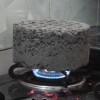Background
Texas, with its vast open landscapes and diversity of renewable resources, is a rich environment for non-wind and non-solar renewable energy production. Hydroelectrcity, geothermal energy, biomass and biofuels are all used to generate power in the Lone Star State.
Hydropower
Hydropower is the most common source of renewable electricity in the United States. It accounted for 6% of total U.S. electricity generation and 60% of generation from renewables in 2010. Hydroelectric power is generated from the force of moving or falling water. Most hydroelectric power comes from dammed water in lakes and reservoirs falling through turbines that are connected to a generator. The energy transforms from its potential form to kinetic, mechanical and finally electric energy in the process.
Another form of hydroelectric power comes from “pumped storage” in which water moves from a lower-elevation reserve to a higher-elevation reserve. The water is then released from the higher-elevation reserve during peak power demand times. While the electricity generated from the process is less than that consumed in moving the water, the financial gain is higher than the cost of pumping water in non-peak times.
Hydropower was one of the most important forms of energy for Texas in the 1930s, bringing jobs and electricity to the state. Today, hydropower accounts for only 1% of Texas’ electric power.
As of 2006, Texas had 23 dams producing hydroelectric power. The Lower Colorado River Authority (LCRA) currently operates six dams, all of which are used for hydroelectric power in times of peak demand. During operation, the six dams can generate up to 292 megawatts (MW) of energy, or 2 percent of LCRA’s annual need. According to the State Energy Conservation Office (SECO), most of the good hydropower generation sites in the state have already been developed. The U.S. Department of Energy estimated that Texas has potential to generate 18,000,000 MW/yr of hydropower but that only 2,900,000 MW could be feasibly generated. Environmental and economic restraints prohibit the full exploitation of this resource.
Saline water and algae production are two forms of non-renewable energy production not currently used in Texas. The state’s mostly warm climate, however, make future investment in them possible. Salt water algae can grow rapidly and be pressed to create biodiesel feedstock.Ocean tidal wave energy is another potential energy source for Texas, though currently not in use.
Geothermal Energy
Geothermal energy is a form of energy gained from internal heat in rocks deep within the earth. Geothermal energy is important because it is always available and is essentially inexhaustible. It is the third largest source of renewable energy in the United States following hydropower and biomass.
There are two ways to generate geothermal energy—by drilling wells to produce electricity from heated water and by using the surface heat from the earth to heat and cool buildings. The latter is typically done with the help of geothermal heat pumps. In Texas, more than 10,000 residential geothermal heat pumps have been installed. These heat pumps are one of the simplest non-electric ways to use the energy. 70% of the energy used by the pump is renewable, while the remaining 30% is electric energy used to transport the geothermal energy. In addition to the residential heat pumps, over 160 schools in Texas have installed geothermal H-VAC systems instead of conventional H-VACs. SECO estimates that using the earth’s temperature to cool and heat buildings could reduce energy expenditures by up to 50%.
Hot steam, geopressured-geothermal energy, hot dry rock and magma have potential to be renewable energy sources for Texas. There are at least five major regions in Texas with significant promise for geothermal energy, though water availability, extraction and disposal are likely limitations to fully taking advantage of this energy source.
Biomass
Biomass is one of the oldest forms of energy production. Texas, one of the country’s leading agricultural producers, has extensive farm lands and forests with abundant plant and animal matter that can be used as biomass energy. Biomass energy comes from burning materials that were once living (i.e. plant and animal matter) and using the heat to create electricity. SECO estimates that over 19 million tons of biomass throughout the state could be used for biofuel production in Texas annually.
Despite the great potential for biomass production in Texas, it only accounted for 1% of the state’s total electrical power generated in 2007. In addition to generating electrical energy, biomass, unlike most renewable energy sources, can also be used for heating and in transportation fuel.
In 2007 the Texas House of Representatives passed a bill to encourage the construction of facilities that generate energy with agricultural waste (i.e. biomass) to help reach the state’s goal for creating and using renewable energy. In 2007, Governor Rick Perry awarded Texas A&M a $5 million grant as part of the Texas Bioenergy Strategy to research biofuel advancements. Over the last four years, Texas A&M University and the Chevron Corroboration have partnered to research ways to increase cellulose crop production to boost biofuel production.
In 2008, the U.S. Congress passed the Food, Conservation, and Energy Act to accelerate the commercialization of biofuels and encourage the production of biomass crops throughout the nation. The bill also outlines ways for states to obtain grants up to 30% of the cost to develop and produce demonstration-scale biorefineries for producing advanced biofuels and grants of $250 million for commercial-scale biorefineries.
Biofuel








